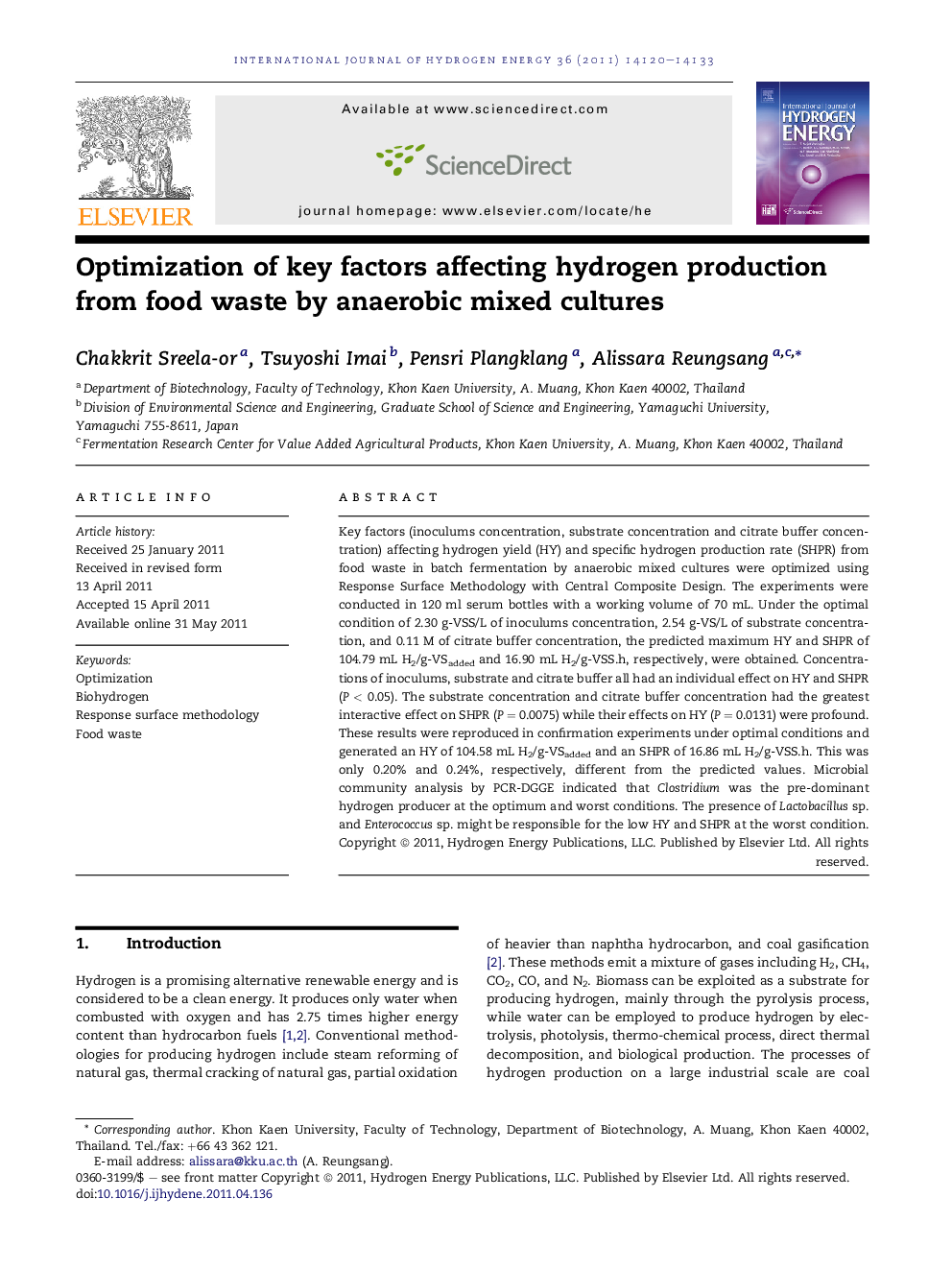| Article ID | Journal | Published Year | Pages | File Type |
|---|---|---|---|---|
| 1278768 | International Journal of Hydrogen Energy | 2011 | 14 Pages |
Key factors (inoculums concentration, substrate concentration and citrate buffer concentration) affecting hydrogen yield (HY) and specific hydrogen production rate (SHPR) from food waste in batch fermentation by anaerobic mixed cultures were optimized using Response Surface Methodology with Central Composite Design. The experiments were conducted in 120 ml serum bottles with a working volume of 70 mL. Under the optimal condition of 2.30 g-VSS/L of inoculums concentration, 2.54 g-VS/L of substrate concentration, and 0.11 M of citrate buffer concentration, the predicted maximum HY and SHPR of 104.79 mL H2/g-VSadded and 16.90 mL H2/g-VSS.h, respectively, were obtained. Concentrations of inoculums, substrate and citrate buffer all had an individual effect on HY and SHPR (P < 0.05). The substrate concentration and citrate buffer concentration had the greatest interactive effect on SHPR (P = 0.0075) while their effects on HY (P = 0.0131) were profound. These results were reproduced in confirmation experiments under optimal conditions and generated an HY of 104.58 mL H2/g-VSadded and an SHPR of 16.86 mL H2/g-VSS.h. This was only 0.20% and 0.24%, respectively, different from the predicted values. Microbial community analysis by PCR-DGGE indicated that Clostridium was the pre-dominant hydrogen producer at the optimum and worst conditions. The presence of Lactobacillus sp. and Enterococcus sp. might be responsible for the low HY and SHPR at the worst condition.
► Factors affecting hydrogen production from food waste were optimized. ► Key factors included inoculums, substrate and citrate buffer concentrations. ► The optimized concentrations were 2.30 g-VSS/L, 2.54 g-VS/L, 0.11 M, respectively. ► Specific hydrogen production rate of 16.90 mL H2/g-VSS.h was obtained.
